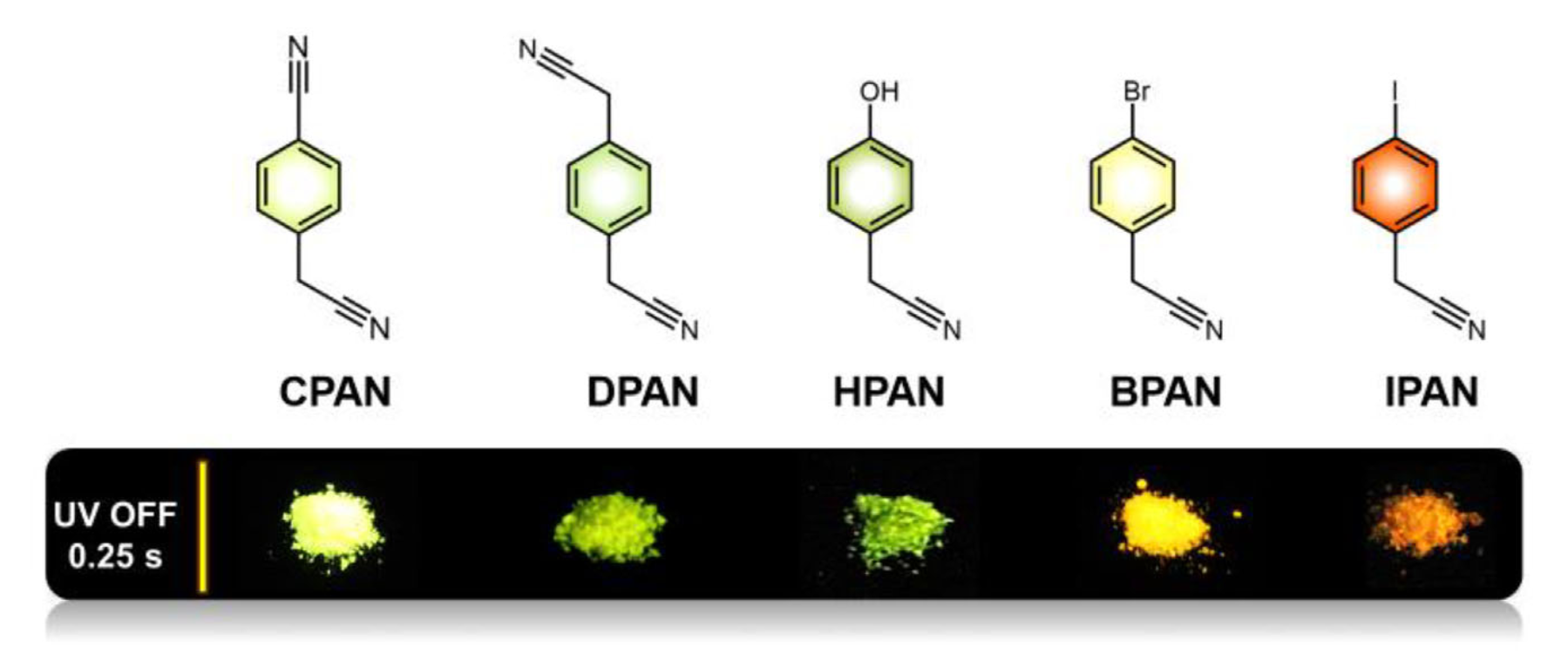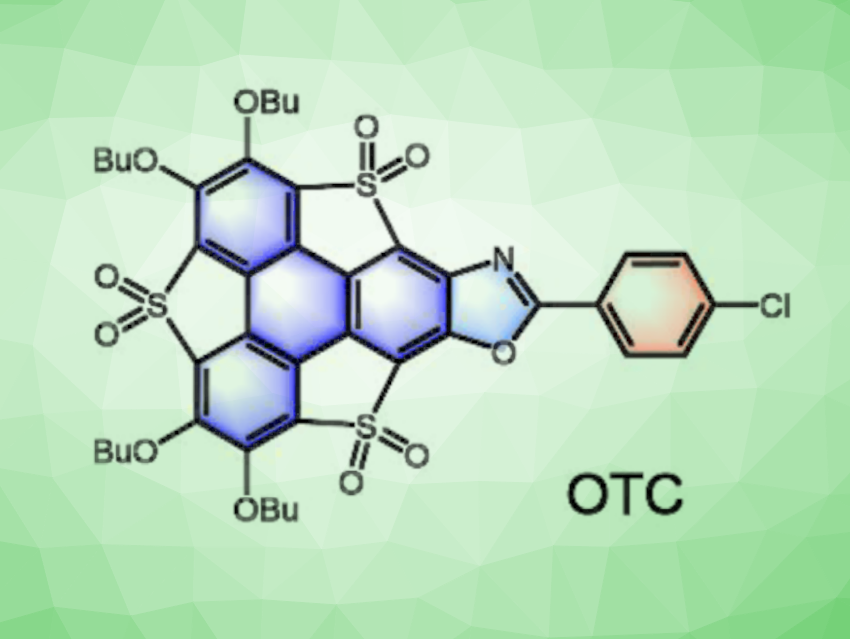Materials can show room-temperature phosphorescence (RTP) or thermally activated delayed fluorescence (TADF). Such effects have potential applications in dynamic displays, efficient OLEDs, and high-resolution bio-imaging. However, achieving tunable multi-emissive RTP and TADF formation in a single organic material remains a challenge.
“Buckybowl” structures are polycyclic aromatic materials with different electron density distributions on their concave and convex surfaces. They usually stack in columns the aggregated state. Different emissions can be obtained when buckybowl molecules are doped into the host matrices due to the different intermolecular interactions between the host molecules and the bowl-like guests.
Xiangfeng Shao, Lanzhou University, China, Zhengxu Cai, Beijing Institute of Technology, China, and colleagues have developed a buckybowl-based luminophore (OTC, an oxazole-fused (S,S-dioxide) trithiasumanene chlorobenzene compound, pictured above).
Different Host Molecules for Different Colors
The delayed emission peaks of OTC were tuned from 536 to 624 nm in different benzyl cyanide-based hosts. The hosts are pictured below: 4-cyanophenylacetonitrile (CPAN), 1,4-phenylenediacetonitrile (DPAN), 4-hydroxyphenylacetonitrile (HPAN), 4-bromophenylacetonitrile (BPAN), and 4-iodophenylacetonitrile (IPAN). The transition processes of triplet excitons in the host/guest systems could be precisely modulated by the external hosts due to the formation of different intermolecular interactions, such as donor–acceptor and hydrogen or halogen bonding interactions between the host and guest.

Overall, wide-range afterglow emissions of a buckybowl-based luminophore were easily tuned by changing the external host molecules. The work could provide a new design principle for dynamic afterglow materials.
- Wide‐range color‐tunable afterglow emission by the modulation of triplet exciton transition processes based on buckybowl structure,
Yongfeng Zhang, Chenchen Xiong, Wenbo Wang, Wenbo Dai, Yue Ren, Junming Xia, Gengchen Li, Jianbing Shi, Bin Tong, Xiaoyan Zheng, Xiangfeng Shao, Zhengxu Cai, Yuping Dong,
Aggregate 2023.
https://doi.org/10.1002/agt2.310

![Synthesis of [c2]Daisy Chains via Mechanochemistry](https://www.chemistryviews.org/wp-content/uploads/2025/04/202504_RotaxanesWithSolidStateMechanochemistry-125x94.png)

